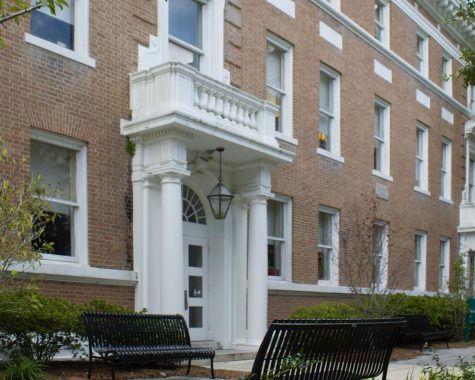Rankings in public service fail to tell the full story
January 15, 2020
“Most Engaged in Community Service.” It’s a ranking that’s hard to miss as a Tulane student. Since the 2018 declaration of Tulane as both No. 1 Most Engaged in Community Service and No. 1 Party School, Tulane has made a comeback on Princeton Review’s 2020 college list with one of Tulane’s proudest statistics flying over McAlister. Despite the attention Tulane has been receiving, especially with the growing number of applicants each year, we may not be deserving of such a title.

Tulane’s Center of Public Service.
When Hurricane Katrina devastated campus and beyond in 2005, Tulane funneled its resources into serving the surrounding community. Public service requirements have since held a prominent spot in our core curriculum with two tiers of service learning that allow students to apply material learned in the classroom to community service projects in the New Orleans area.
A commitment to the community, especially spurred by such a grievous natural disaster, would undoubtedly attract attention. Service learning has become a universal experience for Tulane students, making it appear from the outside as though each student is committed to public service in a way that does not accurately match most students’ experiences.
U.S. News also ranked Tulane No. 3 in Service Learning for 2020, a rating based on nominations from college presidents, deans of admissions and other executive leaders of universities. But people in these positions can only shed light on a very small portion of the experiences and inner workings of their institutions.
These rankings neglect a massive body of diverse commentary and focus on a small percentage that tends to walk past conference rooms, not quads. Tulane’s self-congratulatory tendency about its community service results in a widespread and concerning acceptance of the impressive statistics boasted by admissions and faculty. While Princeton Review’s methodology for its annual rankings only receives input from students, how helpful can this be when those students are not fully informed in the first place?
Seventy percent of Tulane students come from the 20% of the richest families in the U.S. and are primarily white. When a university’s students share little with the residents of the city they live in, can we expect them to have much motivation for public service? Requiring token amounts of service from students of privileged backgrounds and expecting them to be genuinely engaged in community service is not the correct approach. Tulane’s demographic distribution needs to be more of a reflection of the city that it calls home.
It’s difficult to place the blame solely on Tulane’s system or its students. The structure of service learning does not provide the most inviting springboard for college students to remain with the organizations they worked with after checking off their completed hours at the end of the semester. However, too large a percentage of our student body views New Orleans as a playground to use for four years and abandon after graduating. Love for a city cannot just include enjoying the famous food and music scene while turning a blind eye to the countless residents who bear the brunt of acute problems such as food deserts and glaring infrastructure issues.
We can always justify required community service as something better done than not at all, but if we are to represent ourselves as Most Engaged in Community Service in the country, we must understand that involvement is not the same as engagement.






















Leave a Comment